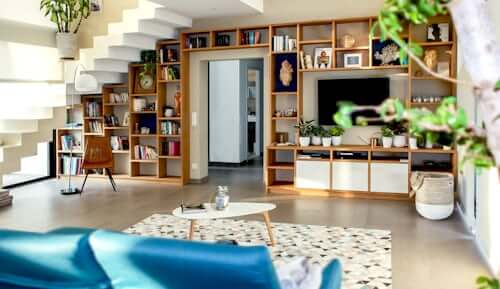
We occasionally include a sponsored link to sustainable products we believe in. These help support our work and allow us to keep creating sustainable fashion content — always marked and never affecting our editorial integrity.
We all know that sustainability is the name of the game these days. And this applies to more than just large-scale manufacturing and agriculture. Every one of us is responsible for helping keep our planet in good shape and helping curb carbon emissions as much as possible.
How can you contribute to a more sustainable world? Quite a few ways. And many of them have to do with your home. Everything from recycling to finding eco friendly windows to finding the right appliances and furniture can be done sustainably if you know where to look.
NZEB
Ever heard of this term? It is rapidly gaining traction among the environmentally conscious. NZEB stands for nearly zero energy building. The term implies that the user has managed to reduce their energy usage to almost net zero. Is this even possible?
It can be. The idea behind NZEB is that they produce as much energy as they consume. NZEBs are the result of both advanced technologies and sophisticated design. They often contain the following characteristics:
- Solar panels for electricity generation.
- Construction materials that are recyclable
- A reasonable temperature that doesn’t need to include additional heat sources
While not everyone can achieve this, we can all take points from the idea. You might not reduce your energy use to zero, but you can certainly reduce it.
Using advanced thermal insulation
Another thing that you can do to make your home more sustainable is to use advanced thermal insulation materials. As the name suggests, these materials provide more than the average level of insulation, thus ensuring that your home uses less energy.
Advanced thermal insulation materials are designed to reduce thermal dispersion. Some of the names might sound complicated – expanded and extruded polyurethane foam, ceramic fiber insulation, calcium silicate, etc. You needn’t worry yourself with remembering the names; when you go to a construction store, simply ask about advanced thermal insulation materials.
Natural ventilation systems
You can reduce the need for air conditioning in the summertime by creating natural ventilation systems in your home. These systems capitalize on the natural flow of air and keep it moving naturally.
There is a distinct science to getting this right, though. Examples of natural ventilation systems include:
- Single side ventilation, which utilizes windows on the same side of a building to increase air flow between them
- Cross-ventilation, which utilizes air coming through opposite sides of a building
- Stack ventilation, in which air flows up and down through aligned windows
- Hybrid ventilation, which combines natural and artificial ventilation systems.

However your house windows are positioned, have an expert look at them. There may be a way to create a natural ventilation system that you’re not yet aware of.
Eco-friendly furniture
Many people are investing in eco-friendly furniture these days. There is even a governing body responsible for rating furniture made from wood (called the Forest Stewardship Council), whose certification can give you confidence that you are using wood from forests that are sustainably managed.
Other qualities of eco-friendly furniture include:
- Furniture made by eco-friendly companies
- Furniture that helps conserve natural resources by repurposing and recycling
- Furniture that includes alternative material usage, such as bamboo
- Furniture whose production involved low greenhouse gas emissions or did not rely excessively upon transportation
- Furniture that was made without the use of toxic chemicals
For eco-friendly mattresses check out our guide.

Green roofs and roof gardens
A popular trend among the environmentally-conscious is having green roofs or gardens on rooftops. This not only helps conserve space on the ground, it helps provide the interior of buildings with additional insulation. Beyond this, they are very good at helping deal with rainwater and thereby minimize the possibility of flooding.
Not everyone can have a green roof, of course. If you live in an apartment building, your options for gardening may be limited to a plot in the city park. But an increasingly large number of apartment buildings are collectively getting involved. It is making for a more sustainable – and prettier – skyline in many places.
Don’t forget to go smart
You can upgrade many of the features of your home to make them smart these days. Despite the initial investment, you will be rewarded with lower energy bills and favorable treatment by the government in the forms of rebates and lower taxes.
Lots of things can be made smart: appliances, thermostats, lighting, even security systems. When you invest in smart technology, your home features will know when they should be utilizing energy and when they shouldn’t. They will adjust and turn off automatically, and you will quickly see the difference in your bills.
Step-by-step improvements
If this all sounds like a lot, remember that you can take the process step by step. Start by changing your lightbulbs to something more sustainable like LED lighting, then take a look at the rest of your house and see what you can upgrade or renovate. Before long, you will find yourself living in a comfortable, eco-friendly home that is kind to the earth. (And its value will go up, too.)
More sustainable living tips
- 6 sustainable ways to get rid of old clothes and shoes
- A guide to green banking
- Review of eco-friendly cleaning products
What sustainable living tips should we cover next?

We’re a team of sustainable fashion experts, change makers, writers, and editors dedicated to changing the world, one individual action at a time.









